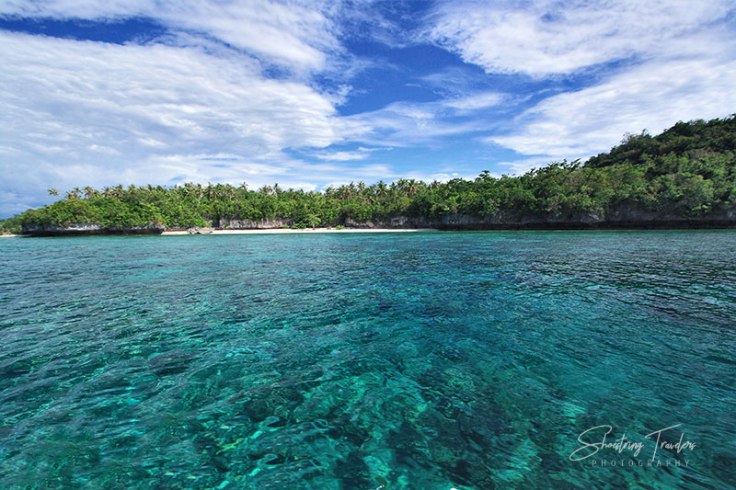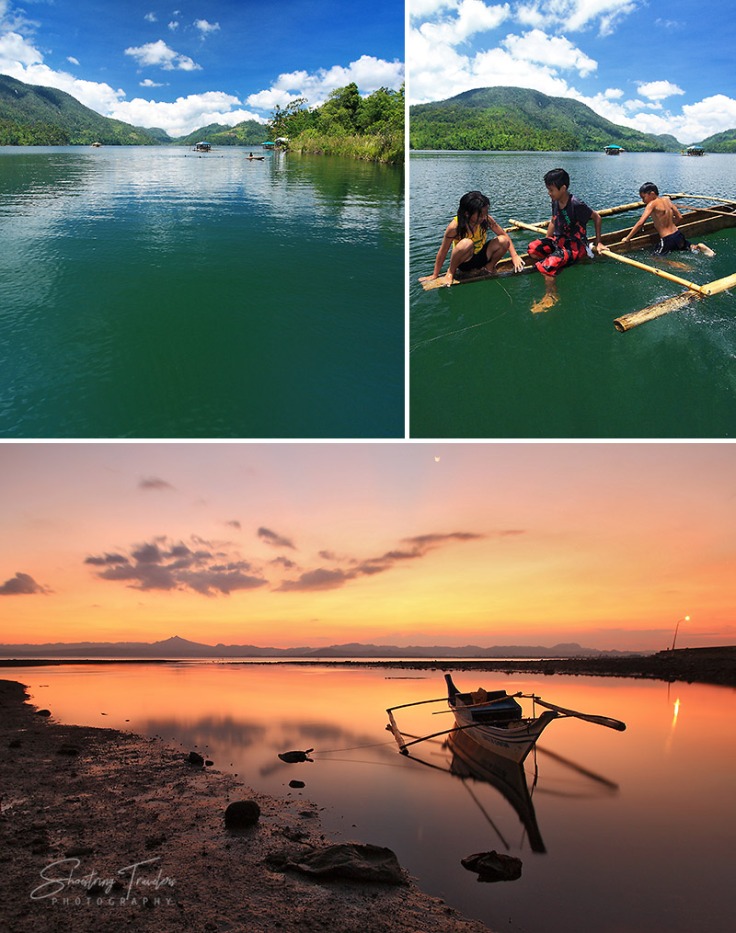Leyte for us, and specially for Leo, was a place famous for history – the first landing of American forces in the Philippines during World War 2 and the largest naval battle of that conflict, the Battle of Leyte Gulf, both occurring in 1944. We had not considered this heavily forested and mountainous province as a tourist destination until 10 years ago when some of its attractions began emerging on the tourism radar.

And so, back in 2015, we began exploring Leyte starting from the city of Ormoc on the western coast of the province. Along with a friend, Leo’s nephew and a former university professor-friend who had retired and gone home to Ormoc, we embarked on a 3-day tour of some of the attractions on the western side of the province.
Cuatro Islas
This is a group of 4 islands that we were able to reach by motorized outrigger from a docking area at the back of the municipal hall of Inopacan town. First on the list was Mahaba Island, a gorgeous isle covered in lush vegetation and with sandy beaches on its southeastern and northwestern sides. The sand is powdery white, the waters crystal clear and there is a sandbar and rock formations at the southeastern edge of the island. Mahaba Island is actually a protected marine sanctuary and sea turtles have been observed on occasion.

Digyo Island was our next destination, the smallest of the 4 islands in the group but probably the most gorgeous. One can easily cover the whole perimeter of the island, ringed by a white sand beach, in just 15-20 minutes. There are sand bars jutting out from both ends of the island with the one in the south longer and more beautiful. The waters here are also crystal-clear. Coral reefs and fishes may be observed less than a hundred meters from shore. At that time there were no resorts or fancy accommodations, just huts or small cottages that may be rented. There were a few houses – probably for caretakers of the island.

Himokilan Island is actually the nearest of the four islands to the mainland but it was our last stop of the tour. It contains a curving white sand bar at the northeastern side with a small village on its beachfront. We circled the whole perimeter of the island by boat, observing some pretty white sand coves in the process. The southwestern part of the island is a sanctuary where fishing, snorkeling and diving are all strictly prohibited.

We did not visit Apid island after our boatmen mentioned that it was the least appealing of the four in the group. We were running out of time to get back to Inopacan anyway. But in retrospect we missed visiting Apid’s white sand beach and its small village. It would have been quite an experience to observe its people weaving mats under the shade of the breadfruit trees.
Kalanggaman Island

Long a secret with fisher folks at Palompon, Leyte, Kalanggaman Island broke into the tourism limelight in 2013 when the passing cruise ship MV Europa II dropped off a few hundred passengers to tour the island. We’ve seen photos of Kalanggaman years before but being there in person to experience its blinding white sand and crystal-clear turquoise waters was a truly incredible experience. A unique feature of Kalanggaman are two sandbars at each of its extremities. Typhoon Yolanda (Haiyan) wiped out one and extended the other but scientists are saying that wave and current action will sooner or later build up the western sandbar to its former state. Recent photos confirmed this as we’ve observed traces of the old sandbar rising back to the surface.
Canigao Island

We did not get to visit Canigao Island because of its location off the town of Matalom which was located farther south from Inopacan and would have necessitated an extra day to be able to tour it. This island was already popular with local tourists since 2005 with its beautiful white sand beach and waters containing a rich variety of marine life. There are no resorts here but there are cottages for rent. An old lighthouse sits in the middle of the isle from which one can view many islands of the eastern Visayas region.
Ormoc City and Lake Danao

As we mentioned earlier, Ormoc was the base for our tour of the above destinations. We were curious how the city would look like 2 years removed from the devastating effects of Typhoon Yolanda. But while there were a few structures still in a state of disrepair, several new buildings had mushroomed including the hotel where we stayed. New investors have started to flock to town, helping the city to recover quickly.
Ormoc, has its own tourism destination in the form of Lake Danao, located in the highlands not too far from the city proper. We would troop to this lake the day after our arrival in the city. Lake Danao National Park is also surrounded by pristine rainforests and because of the high elevation the climate is cooler here.
Tacloban

We’ve already been to Tacloban – the capital of Leyte province and the biggest city in eastern Visayas – thrice before our trip to Leyte’s western coast as part of our work back then. These visits allowed us to visit the long and winding San Juanico Bridge, the longest bridge spanning a body of water in the Philippines. 2.16 kilometers long, it connects the major islands of Leyte and Samar over the narrow San Juanico Strait, allowing Tacloban to be a gateway city to other destinations in the region including Biliran province, Calbayog and Catbalogan cities in Samar and the Marabut Rock Park, the Sohoton Natural Bridge National Park and Guiuan in Eastern Samar.


Other destinations in Tacloban and nearby towns include the Santo Niño Shrine and Heritage Center and the Leyte Landing Memorial commemorating Gen. Douglas MacArthur and the US Army’s landing on October 20, 1944. The latter is actually located in adjacent Palo town.
Other Attractions
There’s still so much to explore in Leyte not to mention those in the nearby provinces of Biliran and Southern Leyte. Many of these are newly discovered or emerging scenic spots such as the Sayahan Falls and Alto Peak, both in Ormoc and the Karap-agan Falls/ Mahayahay Falls in Matalom. More waterfalls include the 7-level Masaba Falls in Palompon, Tulaan Falls in Tacloban and Gunhuban Falls in Bato. There is little doubt that there are more waterfalls deep in the forests and highlands of Leyte just waiting to be explored.
More attractions include the Napantao Fish Sanctuary and Lake Kasud-suran, dubbed as the “The Little Lake Danao” located in a forested highland. Of special interest is the Leyte Geothermal Production Field, the single biggest geothermal power plant in the world. Located in Ormoc’s highlands and forests it generates power for the whole of Leyte island and neighboring provinces.
There’s still so much to discover in this beautiful province and we have not yet visited Southern Leyte which has its own array of exciting destinations. For the moment the pandemic has made travel to the province somewhat difficult but we are hoping this condition will not persist. Leyte has so much tourism potential to be ignored.












Wow! So beautiful blog with excellent photos of Islands and description! Thanks for sharing ☺👌🙂💕
Thanks Priti! These islands are even more beautiful in person.
Your photos of the gorgeous islands are fabulous. The water is so clear and sand so white. 😊👍
Thank you!
Loved this, such dreamy scenes, thanks for sharing your experience 🔆
Welcome Cherryl! Thanks for visiting.